SAN JUAN CAPISTRANO (Day 14 - part 4)

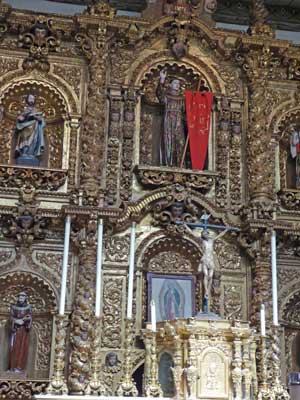
It was during these renovations in the early 1900s when the golden altar piece (or retablo) was installed. To accommodate its size (18.5 feet wide by 22.5 feet tall), the chapel was expanded and the ceiling was raised. The baroque piece from Barcelona (Spain) is estimated to be over 330 years old. It's made of hand-carved wood with a gold leaf.

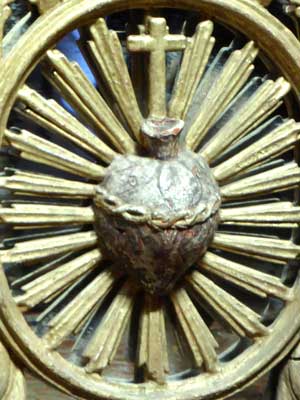
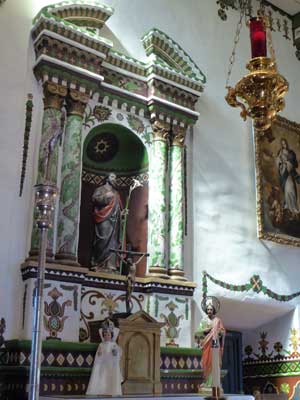



Outside the east wing, in the cemetery...




St. John O'Sullivan (1874 - 1933), pastor here from 1910 - 1933
It's believed over 3,000 people were buried here, with the first recorded burial being in 1781. Burials stopped in 1850 and were relocated to land east of the mission.
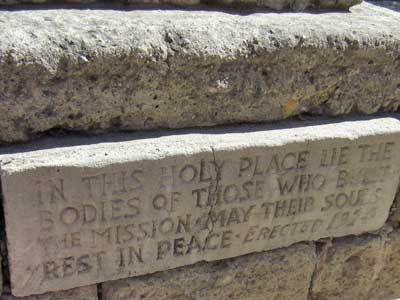

Jose Antonio Yorba was a Spanish solider who helped establish several missions.
A fountain courtyard located behind the bell wall...

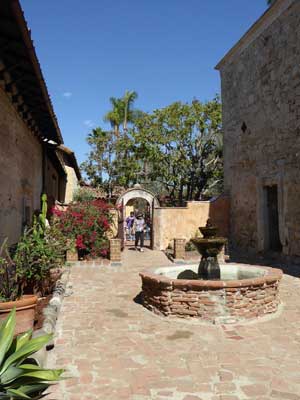

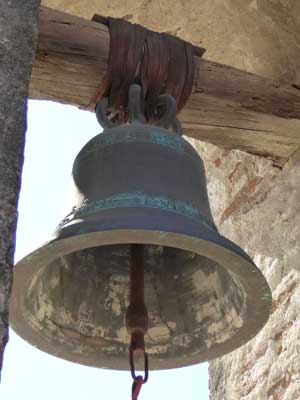


You and I can't ring the bells... but this guy could for 42 years. He was wounded in France during WWI.
The St. Serra exhibit at the end of the east wing...


(right) Our Lady of Refuge, late 1700s


Miguel Jose Serra was born on the Spanish island of Mallorca in 1713. He attended school at a Franciscan monastery ad at the age of 15 was sent to train for the priesthood. After taking his vows around the age of 17, he took the religious name of Junipero. After six years of studying, he was officially ordained as a priest. He completed his doctorate and became a professor at a university. In 1748, he requested permission to leave for the New World as a missionary. He set out at age 35.
After 90 days on a ship, with a short stop in Puerto Rico, Serra arrived in Mexico... and then had to walk nearly 250 miles to Mexico City. This trip gave him an ulcerated leg which would bother him for the rest of his life.
Being a missionary was vastly different than being an academic. He spent many years in Mexico learning how to build mission communities. In 1767, at age 55, he was sent to help colonize Alta (Upper) California. For the next 15 years, he oversaw the establishment of nine missions. He died in 1784 at the mission in Carmel.


The founding of San Diego (the first mission) ... Saint John of Capistrano (1386 - 1456, a Franciscan friar and Catholic priest)

From a book of his deeds, published in 1787

After secularization, the mission lands (present day Orange County) were divided into 20 different ranch lands. (click for a larger image)




A welcoming room ... and dining room
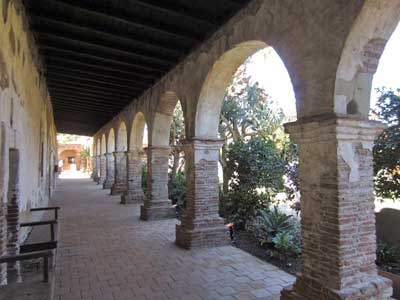


Looking at the small bell tower on the north corridor
return • continue

